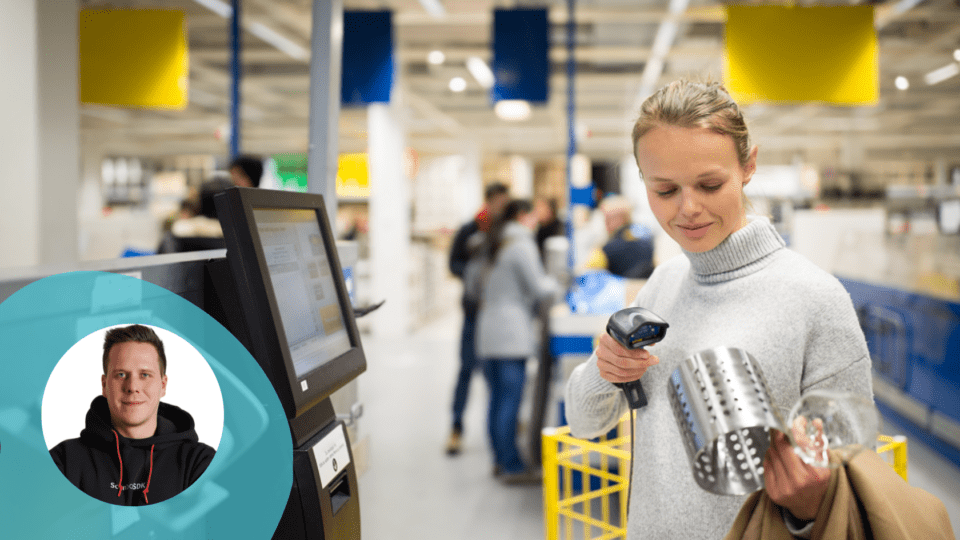Ever since the first introduction of self-checkout (SCO) counters in the late 1990s and early 2000s, their number has increased steadily, and so has the controversy surrounding them: Some people love them because they accelerate the shopping process. Others feel they have to do the work of cashiers only because retailers want to cut labor costs. Technical issues further fueled criticism of SCO counters, and they became the subject of anger and jokes.
Since then, however, SCO counters have become more popular, not least because the technology has vastly improved. In addition, other self-checkout solutions like smartphone-based mobile self-checkout (also called Scan & Go) have emerged. Let’s discuss some advantages and downsides of SCO counters and mobile self-checkout in detail.
Self-checkout counters: Self-checkout counters eliminate (or greatly reduce) queues. Customers can help themselves, which accelerates the checkout process and reduces the staff required for these duties. Employees can instead dedicate their time to other vital tasks such as customer service or product restocking.
On the downside, many consumers complain that self-checkout doesn’t simplify the process. At the end of their shopping trip, they still have to go through the hassle of picking up each item, checking it out and putting it away again. Depending on the number of items purchased, this can also be a long and tedious process to go through. Hence, many feel that said counters are primarily a cost-cutting measure by retailers, letting customers do more work.
Mobile self-checkout (Scan & Go): Mobile self-checkout leverages the processing power of a device that the vast majority of people carry around every day: a smartphone. First, consumers download a retailer’s app. To purchase goods, they scan them one by one directly at the shelf, pack them away and pay either in the app or at a dedicated payment spot. This way, they save themselves several steps and don’t have to wait in line.
With the average smartphone owner using more than 30 apps per month (TechCrunch), and millennials in particular frequently engaging in online shopping via their smartphones, they would likely use them for mobile self-checkout as well. According to a Deloitte study, 85% of Dutch grocery shoppers use a supermarket app at least once a week.
Digital shopping experience: There’s more to mobile self-checkout than just saving customers’ time: With a mobile app, retailers can offer them a digital in-store shopping experience. Customers can access product information and reviews or receive complementary products — just by scanning a barcode. Mobile apps and the data they generate also enhance customer loyalty programs and tailoring offers to customers.
In summary, smartphones and retail apps equipped with the right software can create a rich shopping experience that is in no way inferior to ecommerce. Additionally, a software-based checkout solution allows retailers to keep innovating. The possibilities of an app are endless, from smartphone-based in-store navigation to connecting with smart devices like fridges or speakers.
On top of improvements to the customer shopping experience, mobile self-checkout frees up space previously taken up by conventional checkout lanes (or counters), which retailers can use to display additional products.
Still, mobile self-checkout has one major limitation: Customers need a smartphone to use it. Those who do not own one or do not have theirs at hand can’t use it.
In conclusion, self-checkout counters have become a viable alternative to conventional checkout lanes when it comes to reducing queues and freeing up retail staff. Mobile self-checkout, however, is even more effective in improving customer experience and satisfaction.
Max Stratmann is the Chief Revenue Officer (CRO) of Scanbot SDK, which provides barcode scanning software for mobile apps and websites. Retailers use the Scanbot Barcode Scanner SDK for self-checkout, inventory management, clienteling, and ordering processes. More than 200 enterprises use the Scanbot SDK in their apps, including retailers such as Rimi Baltic.




